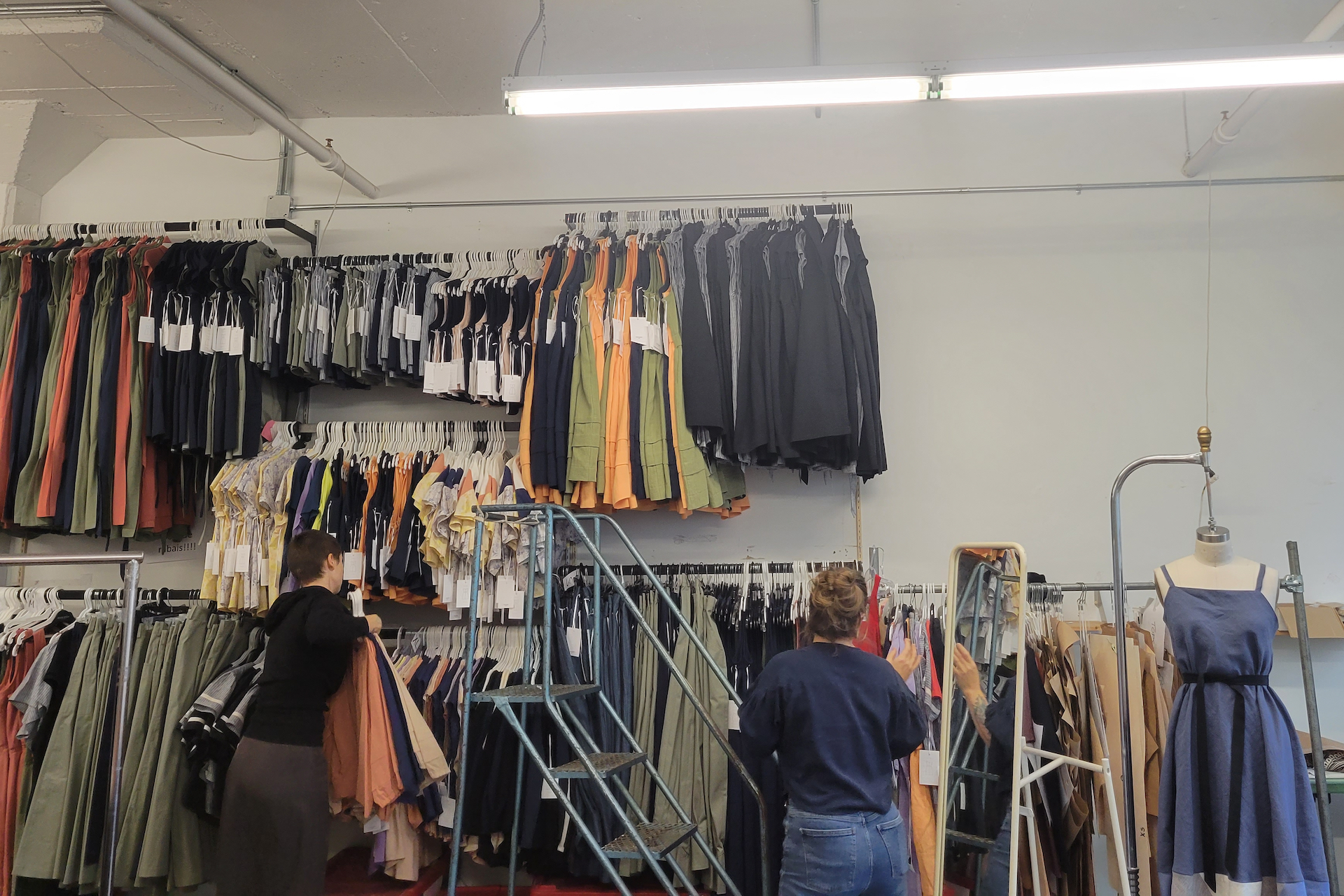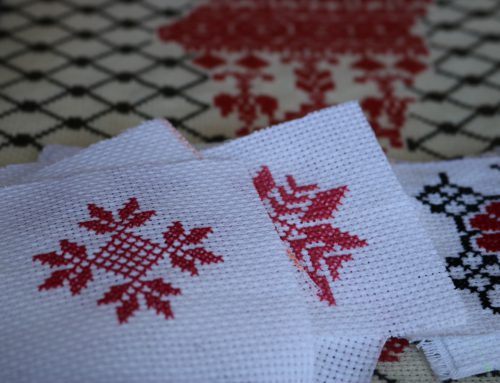BY Dana Jean-Baptiste & Asma Kermiche
Cyrus Arnold has been a fashion enthusiast for as long as he can remember. Though he loves purchasing luxury items, a decrease in quality has made him change his buying habits.
“I feel like some pieces are definitely worth it and some are not. My Prada bag is nylon and I think it’s kind of stupid to charge $2000 for it but it is a bag that I’ve had for a year and a half now, and it still looks pretty good,” he says. “So I do think it’s worth it, but not full price. I would never, ever pay full price for those items.”
Not long after he moved to Montreal, the 21-year-old began working at Carte Blanche, a luxury reseller and consignment boutique. Dealing with items from high-end brands such as Prada, Louis Vuitton and many others has helped him get familiarized with good and bad quality products.
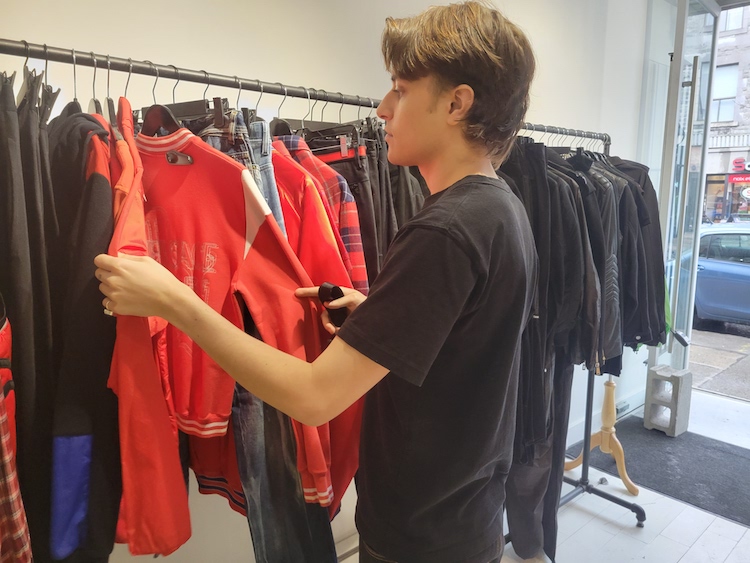
Fashion Enthusiast Cyrus Arnold sorting through clothes at the Carte Blanche boutique. Photo by Dana Jean-Baptiste.
Steven Bond, the director at Carte Blanche also raised concerns about the assumption that luxury is synonymous with durability. According to him, many popular luxury items are very delicate, and not necessarily durable or sustainable.
“Louis Vuitton and a lot of these Chanel [bags] can be very delicate. Especially lamb skin and that kind of thing,” says Bond. “If you put it up against your jeans there could be a colour transfer. It could also get scratched.”
Bond explains that Carte Blanche also gives back to the community, giving previous seasons’ clothing to charity. He says he believes that it helps to avoid waste and gives another life to the pieces.
“The second-hand market is always a sustainable market because obviously, people have already used something once. So as soon as it gets to be used again, it has a second or third life,” he says.
Social media has played a major role in the growth of second-hand shopping. Video by Asma Kermiche.
In 2018, luxury brand Burberry came under fire after it revealed through its annual report that it had burned $36.8 million worth of its unsold inventory. Some accused the company of doing it to prevent their products from being resold at a lower price.
Sustainable designer Jennifer Glasgow has been in the business for 20 years. She says luxury brands sometimes tend to present themselves as more sustainable than they actually are. The practice is known as ‘greenwashing.’
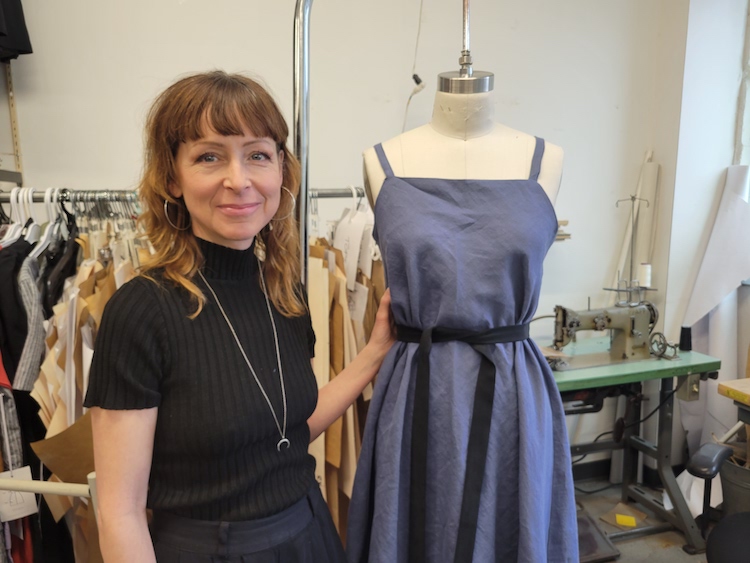
Jennifer Glasgow next to a fitting mannequin. Photo by Dana Jean-Baptiste.
“If a product is in the luxury category, potentially the quality is there and will last longer and there will be added value to that piece longevity and potentially a trendless and timeless feel to that product,” Glasgow says. “I also feel as though there could be a little bit of greenwashing on something that’s a trend or something that is being touted as being more sustainable than smaller brands who are not luxury brands.”
Fashion marketing professor and director at Fibreshed, Marie-Ève Faust, explains that it is in the brand’s best interest to be seen as sustainable.
“[Luxury brands] try to be as sustainable as they can and they try to help their suppliers to be within the sustainability access,” Faust says. “Many times people who are buying luxury products have high income and more discretionary income. Many times they’re more aware of what’s going on and because of all of that they tend to read more and know more about the products and they’re looking forward to having something that’s more sustainable.”
According to the 2022 Transparency index released by Fashion Revolution, a sustainable fashion activist movement, 46 per cent of major brands say they want to include more sustainable materials, only 37 per cent explained how they defined “sustainable materials.”
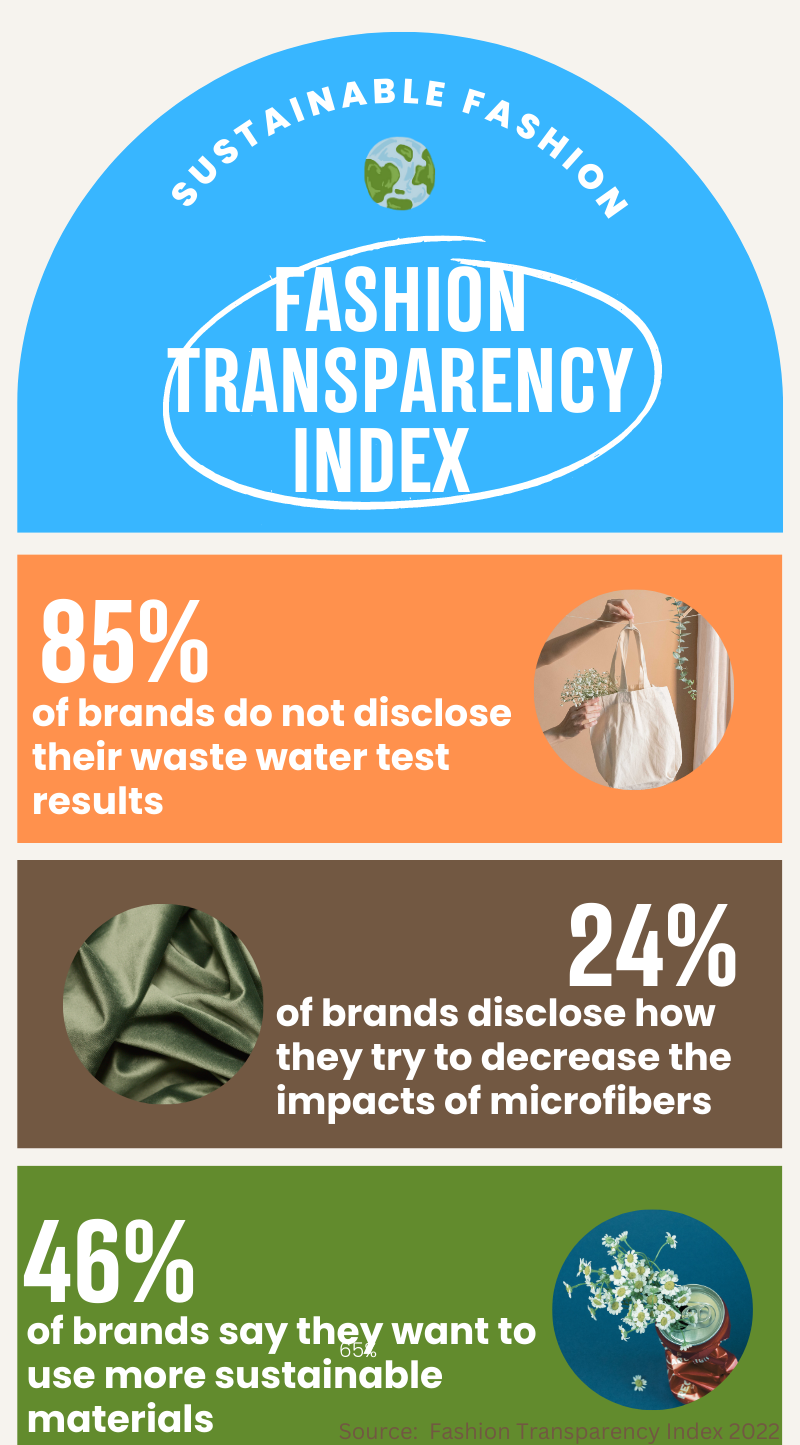
Fashion transparency index statistics. Media by Dana Jean-Baptiste.
Glasgow, the owner of the Jennifer Glasgow boutique, believes that curiosity from consumers about where the things they buy are from will make brands become more ecologically conscious.
“I do think that customers are becoming more and more curious about where they’re buying from and the research shows that people are so interested in sustainability as an aspect of their purchasing power,” Glasgow says. “So if you are interested in sustainable fashion or ethically-made clothing, it’s important to be curious and find out where it’s made and find out what the textiles are.”
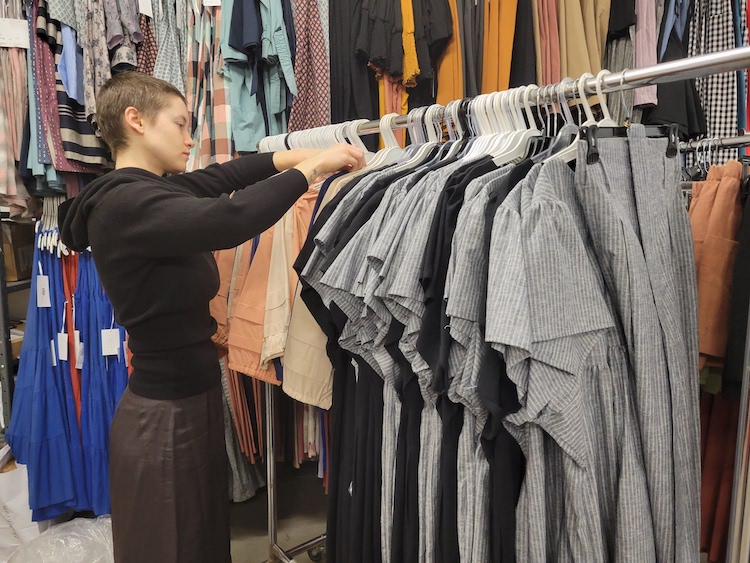
Jennifer Glasgow boutique employees sorting through spring clothing. Photo by Dana Jean-Baptiste.
Having worked in sustainable fashion for over 20 years, Glasgow also explains that being a sustainable Canadian designer comes with its own challenges.
“The issue with being a Canadian designer is that we do not have access often to locally-made textiles, which has been growing more and more, so we have to source outside our country which is much more expensive which means that our products’ prices go up,” she says.
Though shopping sustainably is not always an easy feat for those who lack the financial means, Glasgow suggests being more intentional about the pieces that a person may want in their closet.
“Maybe make a budget with yourself and say ‘okay, I’m going to spend this much on one piece that I need per season’,” she says. “Think local, think about your carbon footprint and invest that money, which may seem like a lot, but you know that those pieces are going to endure. So it’s a mix of finding the budget that you have and finding out where you’re going to use it.”
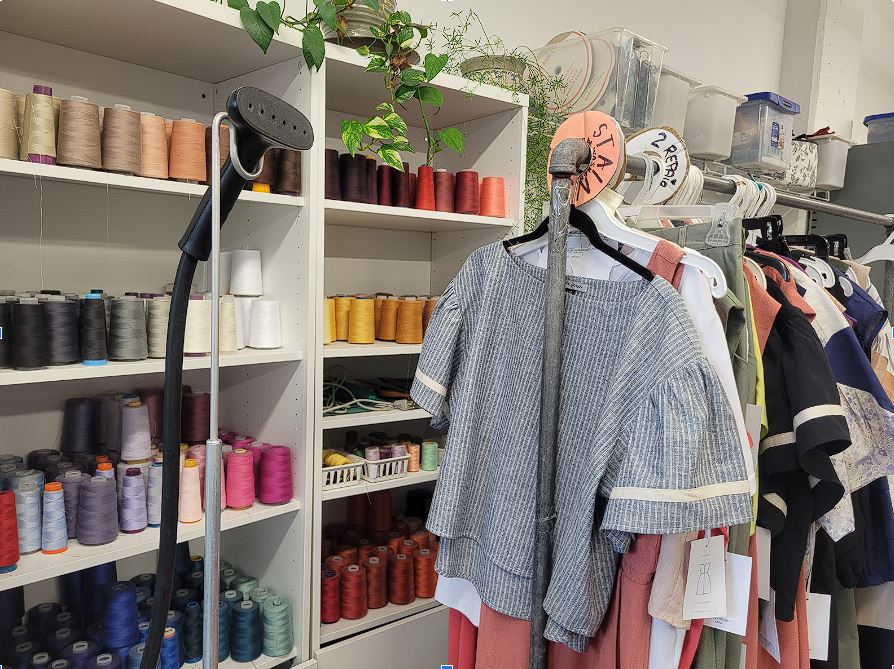
A rack of Jennifer Glasgow clothing to be shipped then sold. Photo by Dana Jean-Baptiste.
For those who still want to buy luxury goods, Arnold says that buying at full price is not the answer.
“Never pay full price for anything because a lot of these designers don’t even own their own labels anymore. I feel like you’re not putting money back into the art, you’re actually just giving these multi-billion dollar companies that own these brands the money.”
